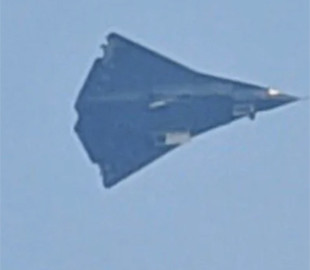
According to US Air Force spokesman Andrew Hunter, the pace of progress of Chinese specialists in creating a new generation air force is extremely high. While the American NGAD project is temporarily frozen and awaits a decision from the new government.
According to representatives of the US Air Force, China may be the first to achieve initial operational readiness of new sixth-generation fighters. As the head of procurement of the US Air Force Andrew Hunter stated in an interview with the publication Breaking Defense, in the race to create a new generation air force, the Chinese may cross the finish line first.
At the end of last year, China publicly presented two promising new generation fighters, which were assigned the conventional indices J-50 and JH-XX. According to Hunter, the published footage of the flight of two unknown Chinese aircraft caused shock in the American aerospace community.
“They could have gotten ahead of us. In fairness, we must say that we pay a lot of attention to what the Chinese are doing. But, despite this, their pace is incredibly high,” — said Hunter.
At the same time, he noted that regardless of the choice of strategy, American aviation seeks to maintain a technological advantage.
“We will offer several options for a new aircraft that will still surpass Chinese developments,” — stated Hunter.
US Programs
The US Air Force representative, in particular, was referring to the NGAD (Next Generation Air Dominance) fighter development program, which has encountered financial and political difficulties.
Hunter noted that at least $20 billion is needed to complete the current stage of development. At the same time, the NGAD project is temporarily frozen, awaiting a decision from the new US government.
One of the reasons for the possible closure of the program is the statement of the Chief of Staff of the Air Force, General David Allwyn, who claimed that the future of aviation is associated exclusively with unmanned systems. This is the Collaborative Combat Aircraft (CCA) program, which represents “another way to develop capabilities” for the US Air Force.
On the contrary, the NGAD fighter is seen as a very expensive option, which will cost several times more than the F-35. However, despite this, in the summer of 2024, the Pentagon began considering the concept of reworking the NGAD to create a lighter and cheaper fighter devoid of the shortcomings of the F-35.
However, observers believe that delays in the implementation of NGAD could give China an important temporary advantage in the race for air dominance.
The main differences of 6th generation fighters
The characteristics of 6th generation fighters in military aviation are based on modern research and concepts developed by leading countries.
Among key features:
Low visibility. 6th generation fighters should be virtually invisible in the radar, infrared and optical ranges. For this purpose, new generation radio-absorbing materials are being developed, as well as thermal radiation control systems and engine wake reduction systems.
AI Integration. Artificial intelligence will play a key role in aircraft control, including pilot support in combat, control of drone swarms (the “faithful slave” concept), as well as real-time threat analysis and prediction.
Network-Centric Warfare Technology or network integration. 6th generation fighters will be part of a single combat network that unites aircraft, drones, satellites, ships and ground units. This will allow for rapid data exchange and coordination of actions over long distances.
High range and combat radius. A significant increase in flight range is expected. This is achieved by increasing fuel efficiency and using new types of engines with higher thrust and lower fuel consumption.
Supersonic cruising speed. The ability to maintain supersonic speed without afterburner, which is already implemented in the F-22, but for the 6th generation it is planned to further increase this indicator.
Modularity and flexibility in armament, which will allow the fighter to quickly adapt to perform various tasks, whether reconnaissance, electronic warfare, or strike operations. The integration of hypersonic weapons will increase the combat potential of the aircraft.

